Refugees in Chad
Rebuilding lives through
an integrated humanitarian
and development response
As of May 2022, Chad—itself one of the poorest countries in the world—was hosting nearly six hundred thousand refugees. In 2020 the COVID-19 pandemic heightened the vulnerability of Chadians and the refugee population.
With the increasing influx of refugees, a comprehensive and coordinated approach by governments and the donor community is necessary to create an environment that supports refugees as they become self-sufficient, and participate in the local community and the local labor market.
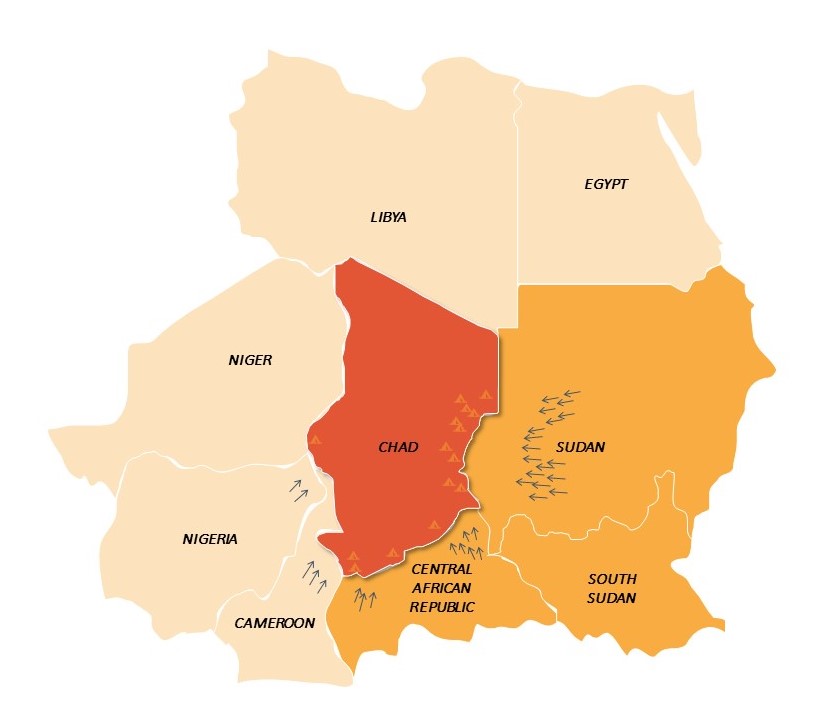
Nearly 600,000 refugees originating from:
67%
Sudan
21%
Cental African Republic
11%
Cameroon and elsewhere
How can we transition from humanitarian relief to an integrated response that is sustained over time?
To answer this question, the report Refugees in Chad: The Road Forward* gathers rigorous evidence and concrete recommendations for the continuing policy discussion in Chad. It draws on a unique data source, one of the first national household surveys in Africa to cover refugees and host communities as well as the general population. It provides a renewed understanding of the challenges and opportunities for refugees and host communities. And it highlights ways to achieve real impact on the ground. Concrete recommendations on how to achieve this are based on evidence that answer four key questions.
*Based on data from December 2020
1 | Who are the refugees?
3 | In similar circumstances, how do some refugee groups achieve higher incomes than others?

2 | What is the welfare status of refugees relative to Chadians?
4 | What are the current relationships between refugees and host communities?
Who are the refugees?
To have meaningful impact on policy, the report answers this question by exploring heterogeneity between refugee communities. It also investigates similarities and differences between refugees and host communities. The answers shape the selection of policies adapted to demographic groups and shed light on feasible venues for integrating refugees within local communities.
Distribution of Households
The Sudanese population was more static with larger household size, compared to the more dynamic Central African refugees. The high share of children in refugee and host villages highlights the need for education and health care services for both groups. Addressing this need is important to enhance peaceful cohabitation and ease integration of the refugees into local populations.
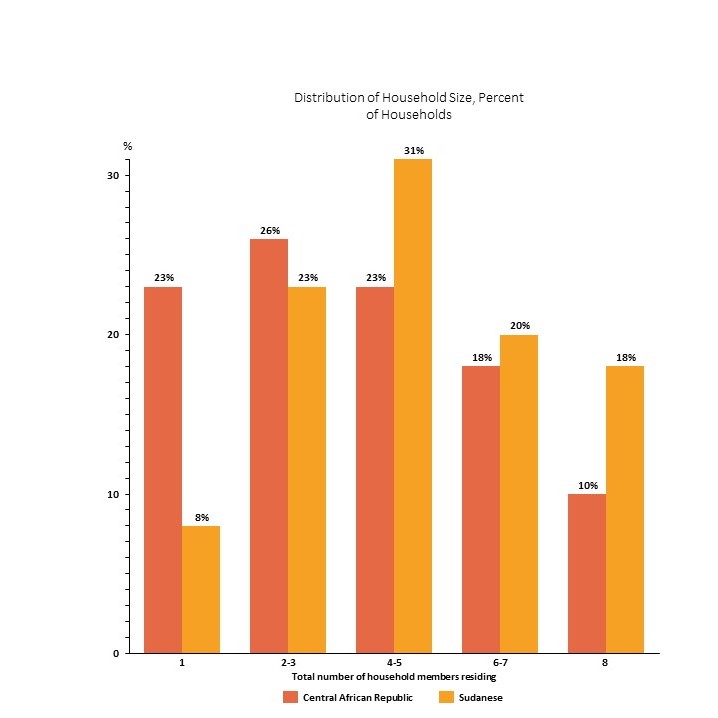
Refugees are likely to stay in Chad for an extended period of time. To inform a longer-term development and integration plan, the report explores the extent to which refugees fall behind their hosts in both monetary and nonmonetary terms.
Food Insecurity & Poverty
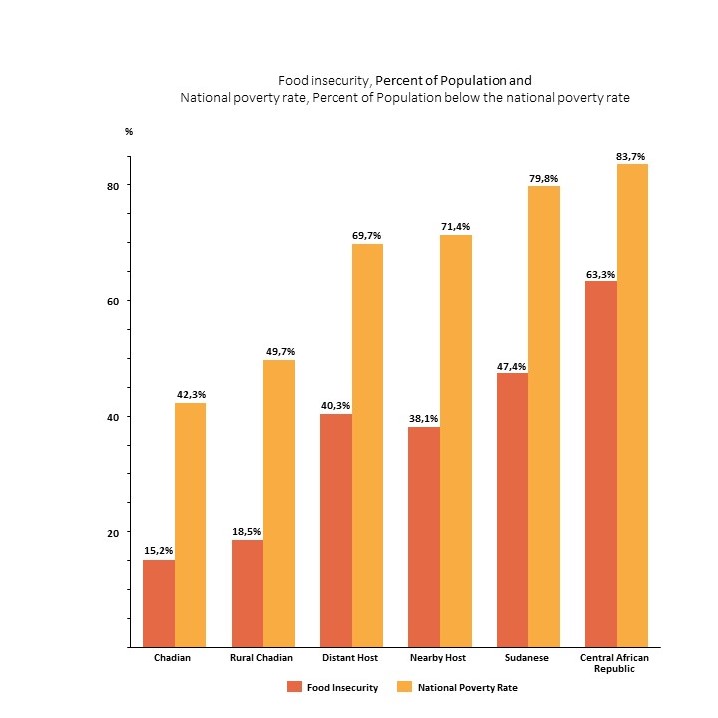
Poverty was as prevalent among Sudanese and Central African refugees as it was among the host communities. It was twice as high as the general Chadian population. Food insecurity was a serious threat for both refugees and host communities but worst among Central African refugees.
Education
Chad has one of the lowest human capital indexes in the world. A Chadian child is expected to reach only 30 percent of his or hers potential by adulthood. In recent years, the government of Chad has made substantial efforts to include refugees in the education system. Compared with host communities, refugee children had significantly higher school enrollment rates and a shorter distance to school.
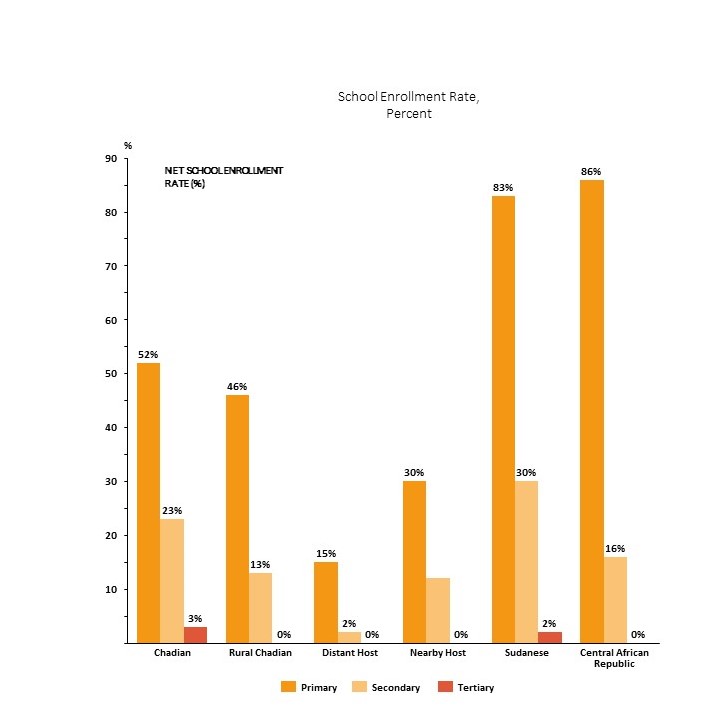
Income & Employment
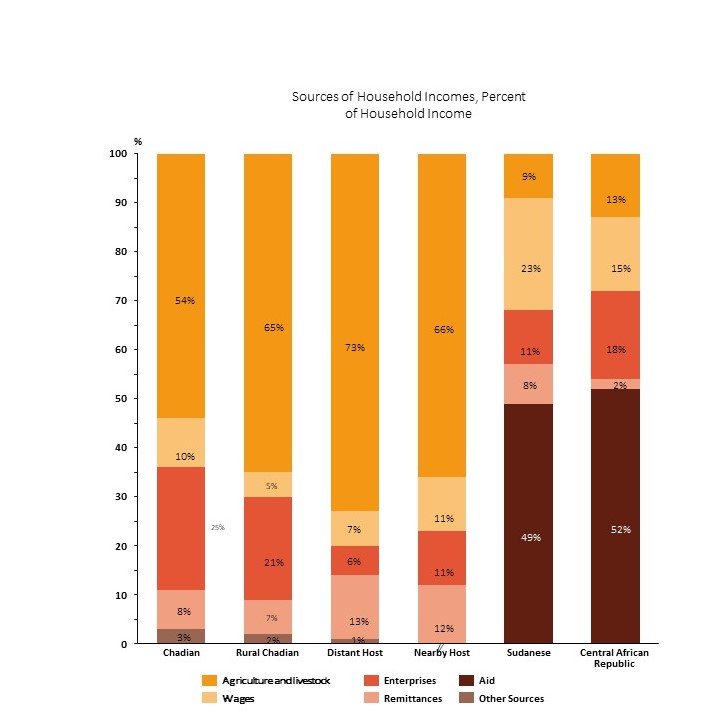
Aid was the major source of income for refugees, but aid alone was not sufficient. Refugees often supplemented their income with earnings from casual labor, small trade, remittances, and to some extent, agricultural production. The latter was the main source of employment for both refugees and the host communities, although the share of the workforce in agriculture was significantly lower for refugee communities. This could possibly be the result of limited access to agricultural land and inputs for refugees.
What is the current relationship between refugees and host communities?
To design policies that encourage self-reliance and participation of refugees in local communities, the report examines the continuing relationship between refugees and their host communities. This can help create an environment in which refugees and host communities can thrive together.
What is the Road Forward?
Continue food aid in the short term
- Continue the existing food aid program among refugees and in host communities.
- Increase food aid and extend its coverage among Central African refugees.
- Extend coverage in host communities.
- Partly or fully substitute cash transfers for food aid.
Adopt a graduation approach
- Introduce a comprehensive graduation approach that combines complementary programs that provide cash transfers, productive assets, and training, to refugees and host communities.
Provide long-term leases land or allocate land that has potential for cultivation
- Negotiate long-term land rentals in favor of refugees.
- Target Chadian host communities through government and donor programs when promoting agricultural productivity.
Enhance microfinance and mobile financial services
-
Expand financial inclusion and microfinance and mobile financial services throughout Chad.
-
Adopt flexible forms of identification, such as refugee identification (ID) cards, and collateral requirement.
-
Introduce refugees and host communities to the financial concepts behind savings and credit associations, MFIs, and the benefits of mobile banking.
Facilitate refugee freedom of movement
-
Enforce the new Asylum Law to grant refugees freedom of movement.
-
Ensure that national authorities recognize refugee ID cards as an official form of identification.
Address knowledge and data gaps
-
Include refugees in national household surveys.
-
Set-up a monitoring and evaluation system of refugee-support programs.
-
Coordinate among government and international development agencies to systematically compile all evidence and lessons learnt on refugee-related programs.
Source of data and story information:
Nguyen, Nga Thi Viet, Aboudrahyme Savadogo, and Tomomi Tanaka. 2021. “Refugees in Chad: The Road Forward”. Washington, DC: World Bank. Contacts: Nga Thi [email protected], Aboudrahyme [email protected] and Johan A. Mistiaen, Practice Manager, World Bank – [email protected]


